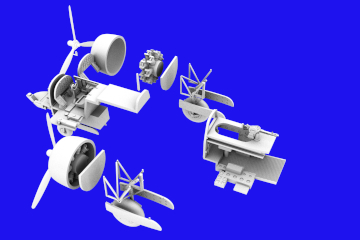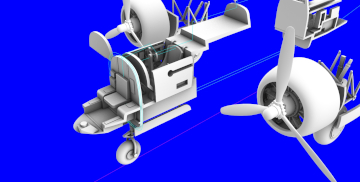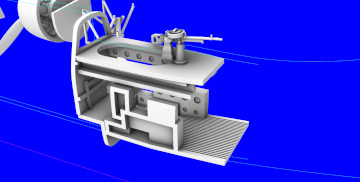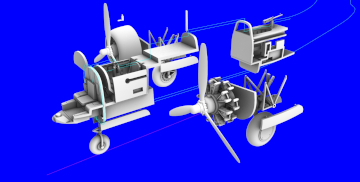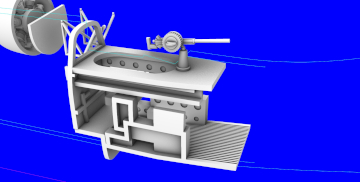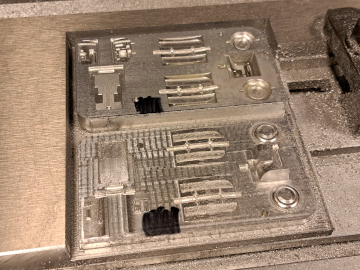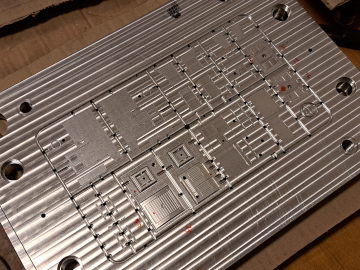FR0052 DB-7 in French Service
History:
In 1939, as war was looming, the French government was worried about its lack of modern aircraft for defence, so a purchasing committee was sent to the USA to buy planes. During their visit, they were shown the Douglas Model 7B, a promising twin-engine, high-winged light bomber. Despite a crash during a French pilot's test flight, France decided to order 100 of these aircraft, which were renamed Douglas DB-7, to be delivered by January 31, 1940.
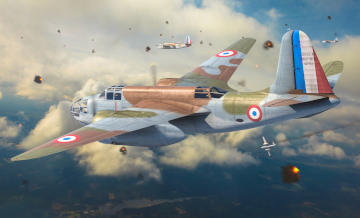
Later, on October 14, 1939, France placed another order for 100 DB-7As, which featured Wright R-2600-A5B Twin Cyclone engines, an enlarged tail-fin, lengthened engine nacelles, and different engine cowls. On October 20, 1939, France ordered an additional 170 DB-7s and 480 DB-7Bs, which were to be shipped to France for assembly. However, the crated aircraft were sent to Morocco for assembly in Casablanca due to concerns that the intended port of arrival, Le Havre, and the assembly plant in Caen were too close to the frontline.
This delay in assembly and delivery meant that only 10 aircraft were assembled in April, and 20 in May, with similar progress in the following months. The DB-7 assembled in Morocco were modified to meet French standards, with changes made to throttles, radio equipment, armament, and painting of the fuselage roundels. The assembled planes were first issued to groups GB I/19 and II/19, but it wasn't until May 16, 1940, that they were fully equipped for use in metropolitan France.
In mid-June 1940, the French forces opposing the German advance in northern France were in a disastrous state. As a result, it was decided to evacuate any remaining modern aircraft to France's North African colonies, so the DB-7s were sent to Algeria. The DB-7 bombed Cagliari in Sardinia after Italy attacked a much-weakened France.
DB-7s retaliated by bombing the British colony of Gibraltar after the British attacked Mers-El-Kébir on July 20, 1940. However, after the US/British landings in North Africa in 1942, the DB-7 were back into action against the Axis forces. In 1944, six aircraft continued to fight in the liberation of the 'Atlantic pockets'.
On June 20, 1940, France signed an armistice with Germany and unfulfilled French contracts in USA were transferred to the British, who were still fighting. The British designated these aircraft Boston Mks.I & II, respectively, although some were renamed as Havoc Mks.I & II when operated as night fighters and intruders. These French-specification airframes needed changes to throttles, radios, and armament to meet British requirements. The DB-7B became the Boston Mk.III and was delivered from the USA and manufactured to British specifications.
The DB-7 was a very capable and adaptable light bomber. Later versions, with enlarged tail fins and more powerful engines, were the Boston MK. II, Boston MK. III, Havoc, etc.. They were used by many countries including France, the UK, USA, USSR, Australia, South Africa, and Brazil. Belgium had also ordered 16 DB-7s in 1940, but they were not delivered due to its surrender to Germany.
In US service, the DB-7 was renamed as the A-20 Havoc. The A-20A-C models were visually similar to the enlarged tail-fin Boston MK.III, while the P-70 Nighthawk was a US night fighter version. The A-20G, H, J, and K were the last main production versions, with the A-20J also known as the Boston Mk.IV in British service. These models had more powerful engines and a powered gun turret for rear defence, whilst the A-20G & J had four cannons and two machine guns in the nose for low-level strafing attacks.
Specifications for French DB-7: A three-seat, all-metal light bomber of mid-wing design with twin 910 hp Pratt & Whitney 1830-SC3-G engines. Wingspan 18.70 m, length 14.30 m, and wing area 43.10 m2. Its service ceiling was 9,400 m and it had a maximum speed of 496 km/h at 3,400 m. Armament was four Browning machine guns in the nose, twin MAC machine guns in the upper rear fuselage, and up to 800 kg of bombs carried internally.
Erratum : the french DB-7 (as well as their U.K. colleagues) had two exhausts for each engine, symmetrical, one on the fuselage side, one externally. The exhaust on the fuselage side was forgotten, iy should be scratch built (symmetrical to the "external" exhaust). Special Hobby will probably propose a correction set.
Schemes and decals:
- Nr 83, 3 ème escadrille of GB II/32, Casablanca, Morocco, June 1940. Sgt Duhamel
- Nr 45, GB I/32, North Africa. Aircraft of Group Commandant. Coded Red 0
- Nr2, 4 ème escadrille GB II/32, Laghouat, Algeria, 19 th of March 1941, Adj-chef Picard. Coded 5, with BR 219 crest.


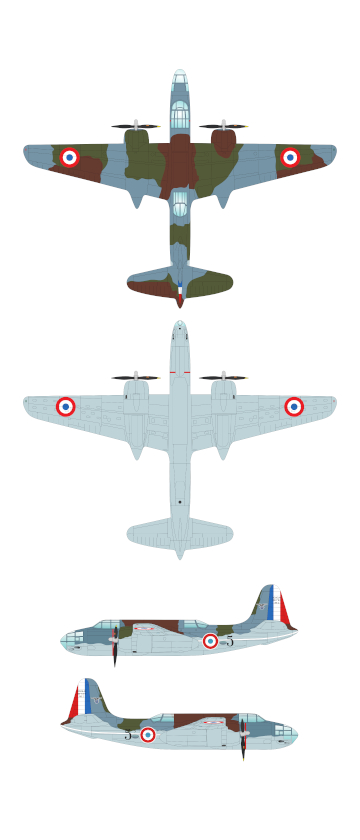
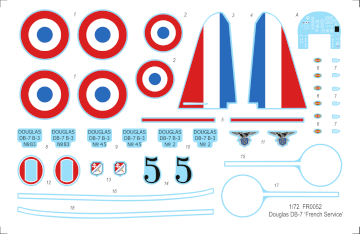
3D views, moulds (new moulds)
